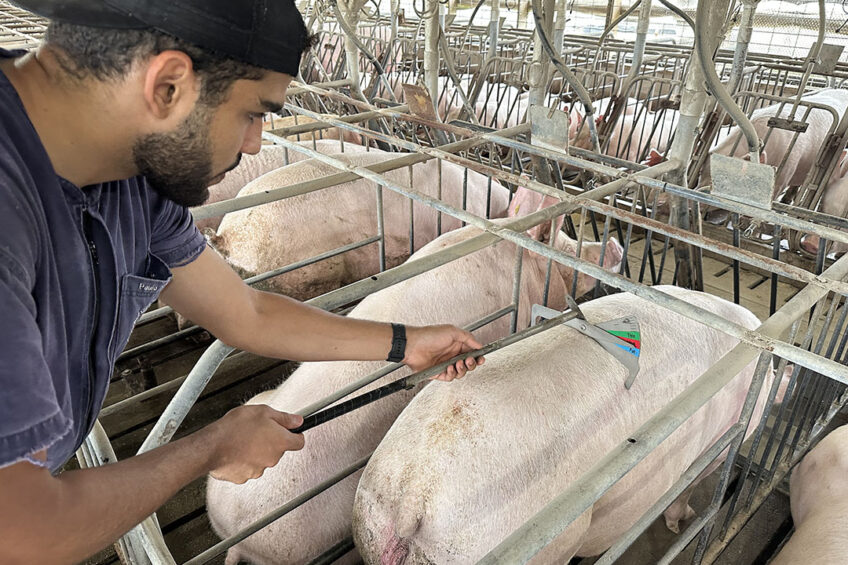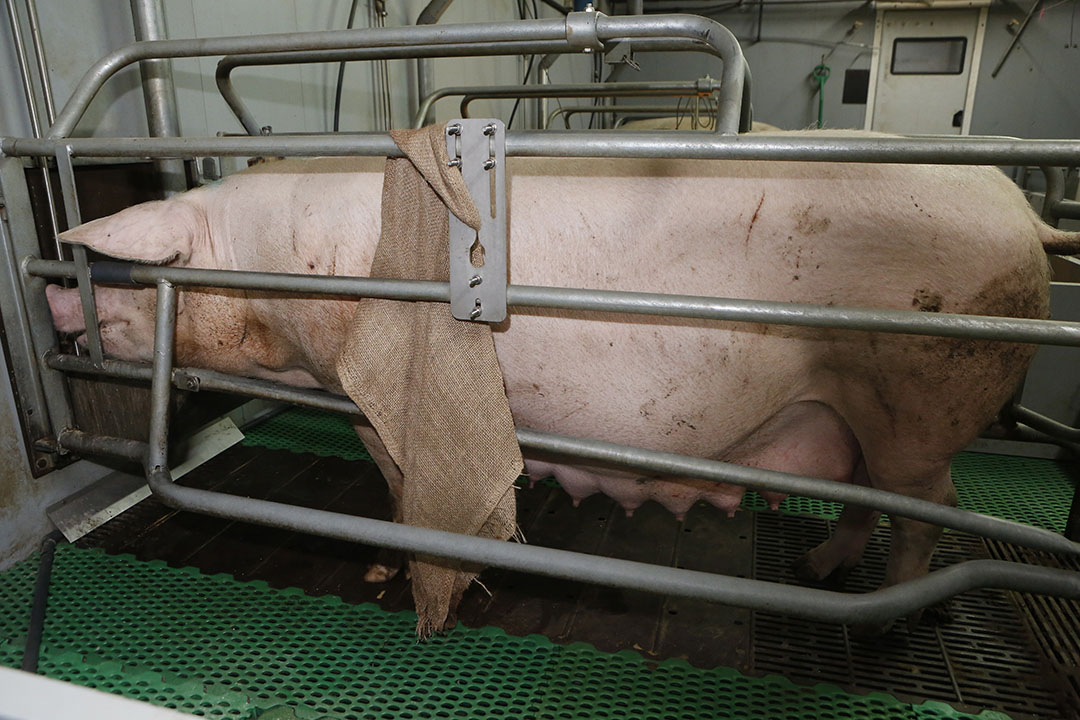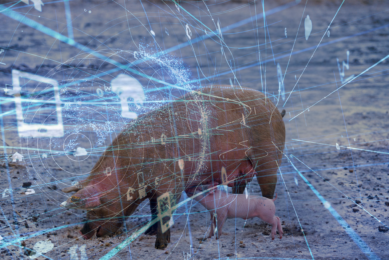Application of the sow body condition calliper

To assess sow body condition accurately, it is helpful to have tools that do not rely on the human eye and are not subjective. In that context, a sow body condition calliper can help take the subjectivity out of visual and manual scoring and enable producers to optimise feed costs and maximise sow welfare.
Proper management of sow body condition is essential to prevent over-conditioned and under-conditioned sows. Preventing over-conditioned sows decreases gestation feed costs, improves reproductive performance, reduces culling rates, decreases rear heel lesions and lowers farrowing issues.
On the other hand, preventing under-conditioned sows reduces the risk of low birth weights in piglets, increases farrowing rates, decreases the risk of shoulder lesions and lameness, enhances herd longevity and improves animal health and welfare. Visual and manual scoring are the most common methods to evaluate body condition. That process, however, costs both time and labour and is also prone to observer error.

Subjective sow body condition scoring
Body condition scores are useful in assessing nutrition provision for sows and to evaluate heating, ventilation and health, and they typically have low associations with sow backfat. The body condition score scale ranges from 1 (“emaciated”) to 5 (“grossly obese”), and sows with a score less than 2 should receive immediate action to improve body condition. On the other hand, sows with a score of 5 should have their daily calories reduced to decrease their body condition. Gestating sows should be managed to attain a body condition score of 3 or 4 about 2 weeks prior to farrowing to ensure that the growing litter in the sow is sufficiently nourished and the sow is able to properly nurse the piglets.
Ideal body condition score
The perceived “ideal” target for sow body condition score varies between individuals across the herd. It is recommended that sows should enter farrowing with at least a body condition score of 3 to 3.5 and complete a four-week lactation with a minimum body condition score of 2.5 to 3. In addition, sows that have lost body condition during lactation need to be placed on a feeding regime to return to the body condition score of 3 by week 5 of gestation.
Indicators of body condition
Both subjective and objective evaluation of body condition indicators are required for an accurate body condition assessment. Body condition indicators include weight, backfat and the lean muscle mass of each sow; however, the visual (subjective) body condition scoring system does not measure backfat. An estimate of weight and the measurement of backfat thickness developed by Kansas State University is used as an objective precise approach to determine the body condition of sows.
What is a body condition calliper?
The sow body condition calliper is a cost-effective tool developed by Dr Mark Knauer at North Carolina State University. The calliper establishes a constant measurement of sow body condition across a production system, and its use is not affected by the experience level of a farm’s labour. According to Dr Knauer, the sow calliper is a combination of a calliper and a protractor. The concept behind the tool is based on the premise that the weight, fat and muscle gain or loss in sows alters the shape of their back. The sow calliper is currently in use in various states in the US and over 40 countries worldwide.
How does the sow calliper work?
The sow calliper is placed on the last rib to measure the angle of a sow’s ribs in relation to the backbone. It is important to place the centre of the sow calliper on the sow’s backbone, then a simple dial reading quickly indicates her body condition score. According to Dr Knauer, the sow calliper took off with only word-of-mouth advertisement and Dr Knauer and his team have been creating new versions to improve the calliper function.
Various versions of sow body condition calliper
Version 1.0 of the sow body condition calliper is no longer produced because the dial on the calliper was too easy to bend, thus throwing off the measurements slightly. Then, Dr Knauer and his team designed version 2.0 which resembled version 1.0 with two handles but had a sturdier dial. They reduced the weight by trimming off some of the numbers that were rarely used. Later, version 3.0 was developed based on producers’ feedback, in which one of the handles of the calliper was removed. This made it cheaper and lighter. A 30 inch (76 cm) extension was added, which made it faster and easier to use in farms with a larger sow population.
Key factors in developing the calliper
Feedback from producers is an essential aspect of evolving the sow body condition calliper. It is important to continue to listen and learn from the producers and to roll out each version of the tool slowly to ensure its correct application on swine farms. In addition, the instruction for using the calliper needs to be available for producers and animal caretakers.
Studies regarding the use the calliper
In 2015, Dr Knauer and his colleagues conducted a study to identify the calliper width and location that best describes sow weight, backfat, muscling and visual body condition. Then, a prototype calliper was used to quantify the angularity from the spinous process to the transverse process of a sow’s back. The results of the study suggest that the optimal sow calliper width was 26.7 cm, and measurements should be taken at the last rib.
Concluding remarks
The sow body condition calliper is a novel cost-effective technology developed by Dr Knauer and his colleagues which measures the body condition score objectively. It is an effective way to validate farm success and take the argument out of evaluating sow condition. However, further research is required to identify the ideal angle for the sow body condition calliper in relation to reproductive performance.











